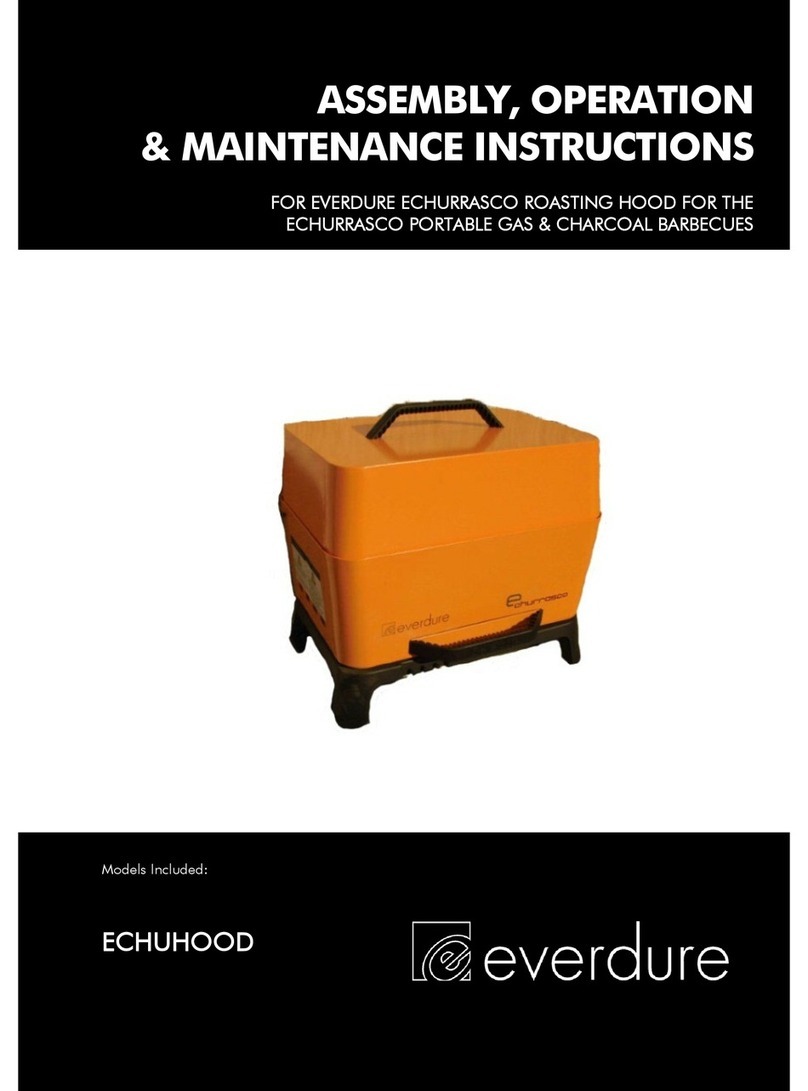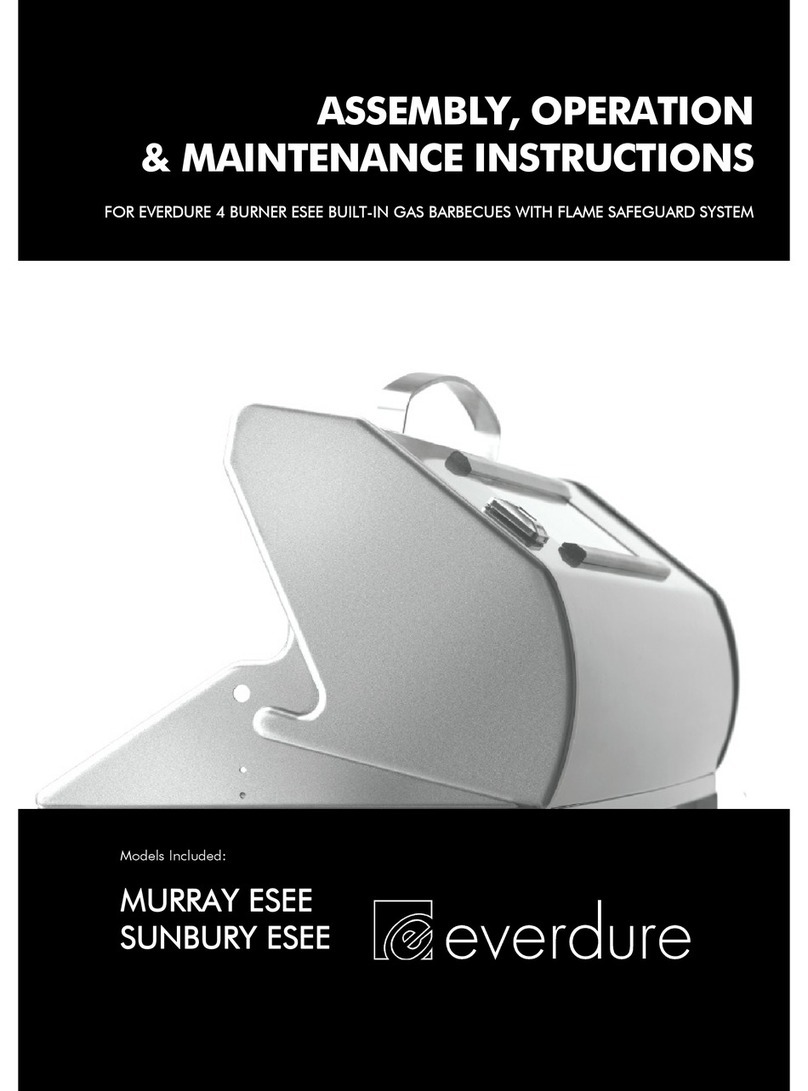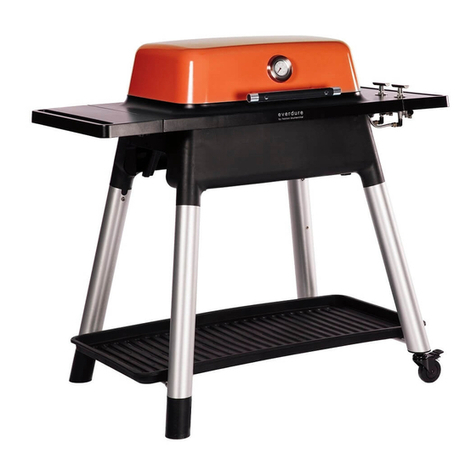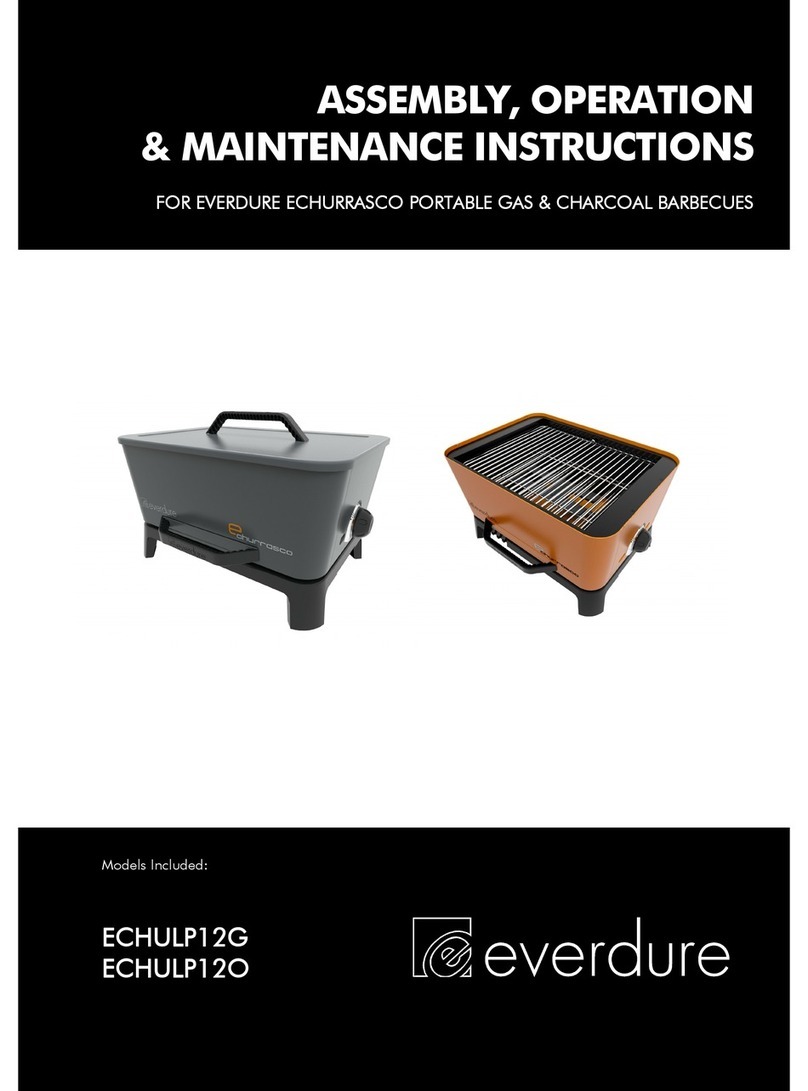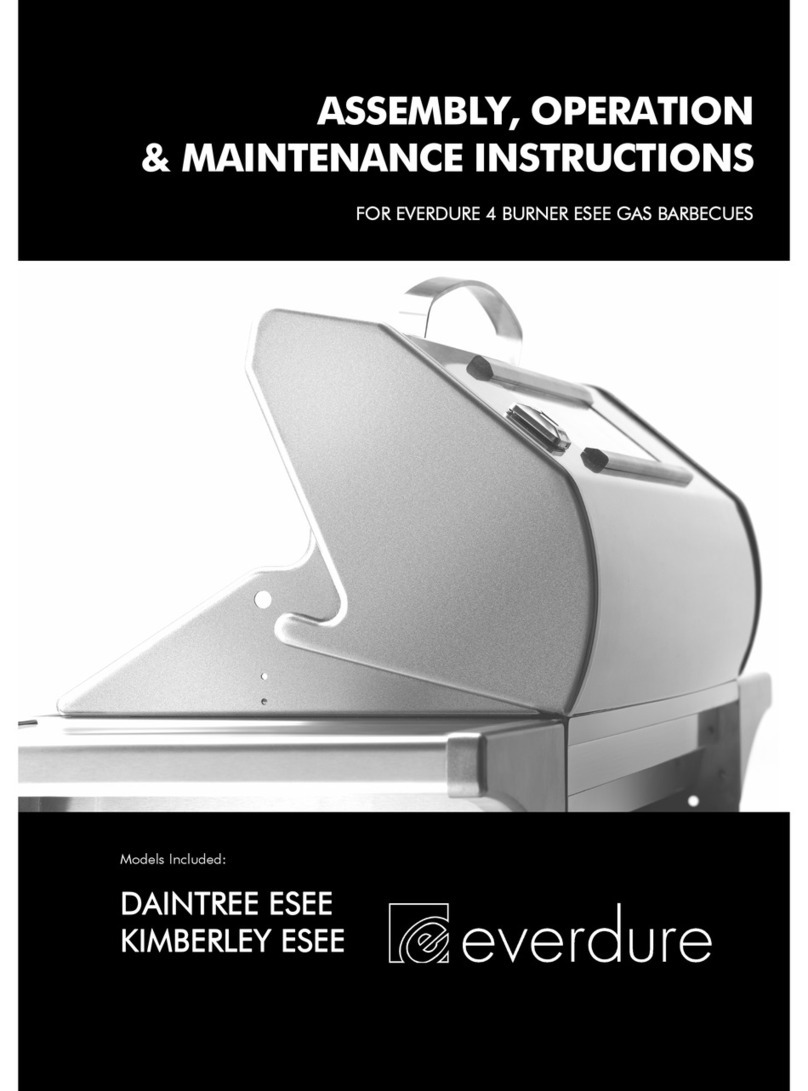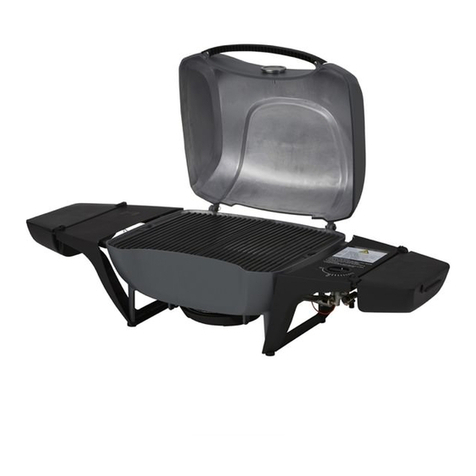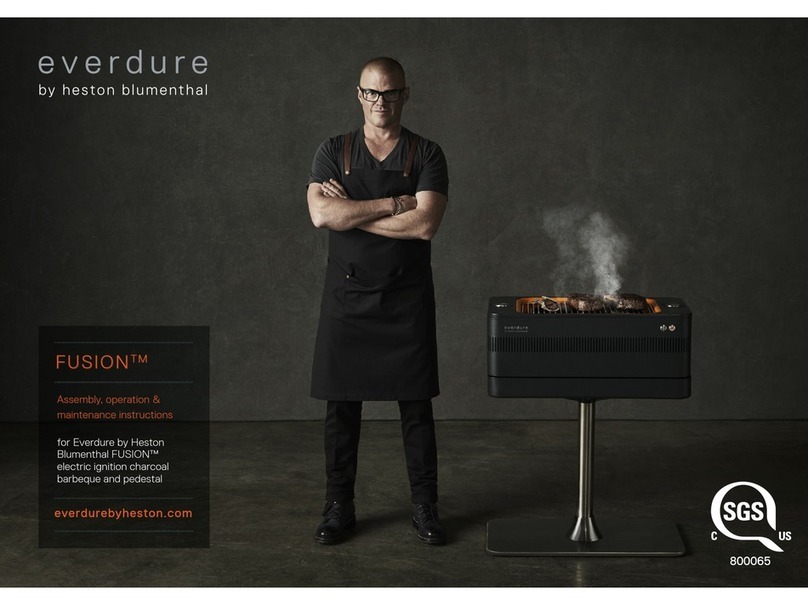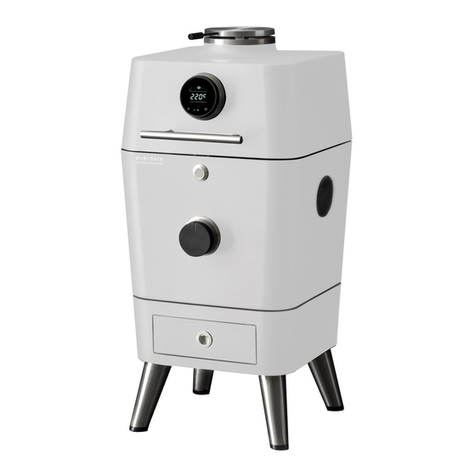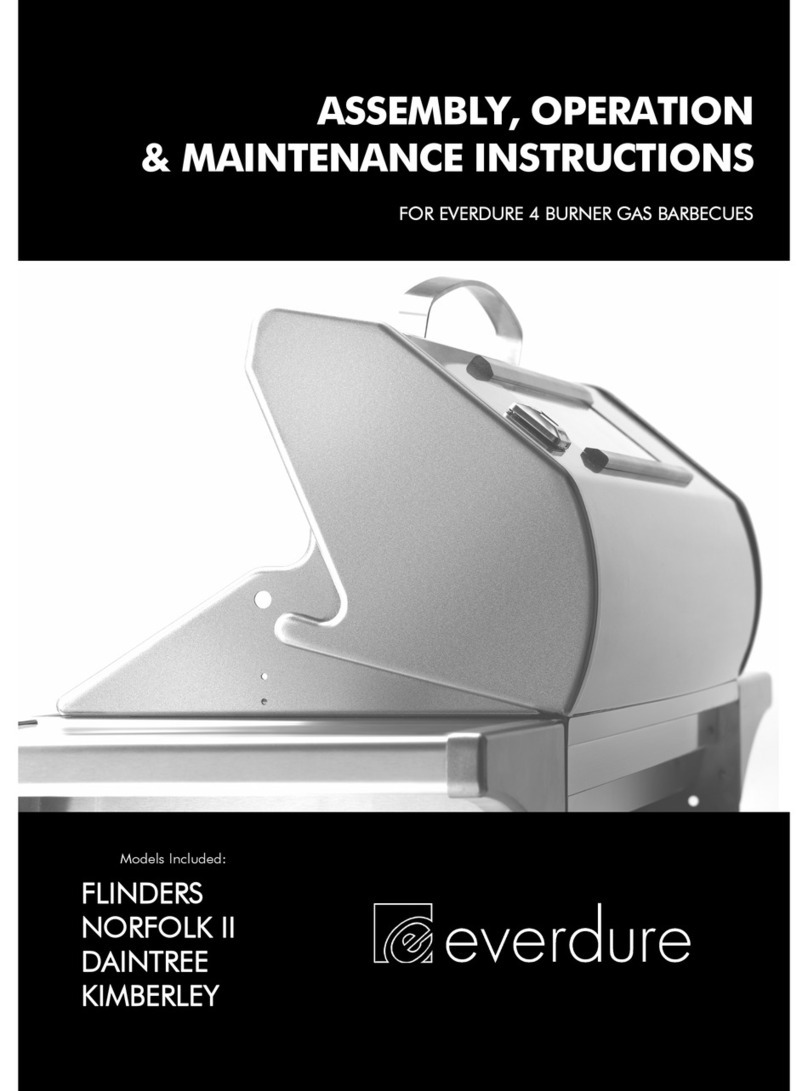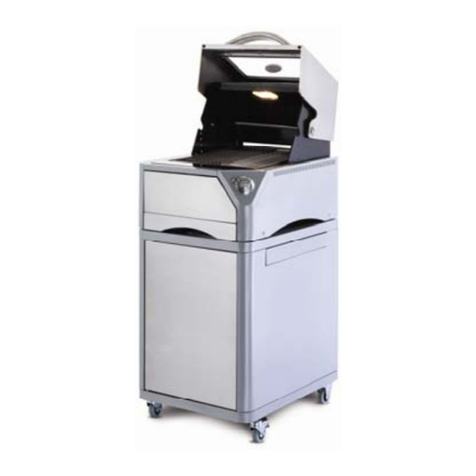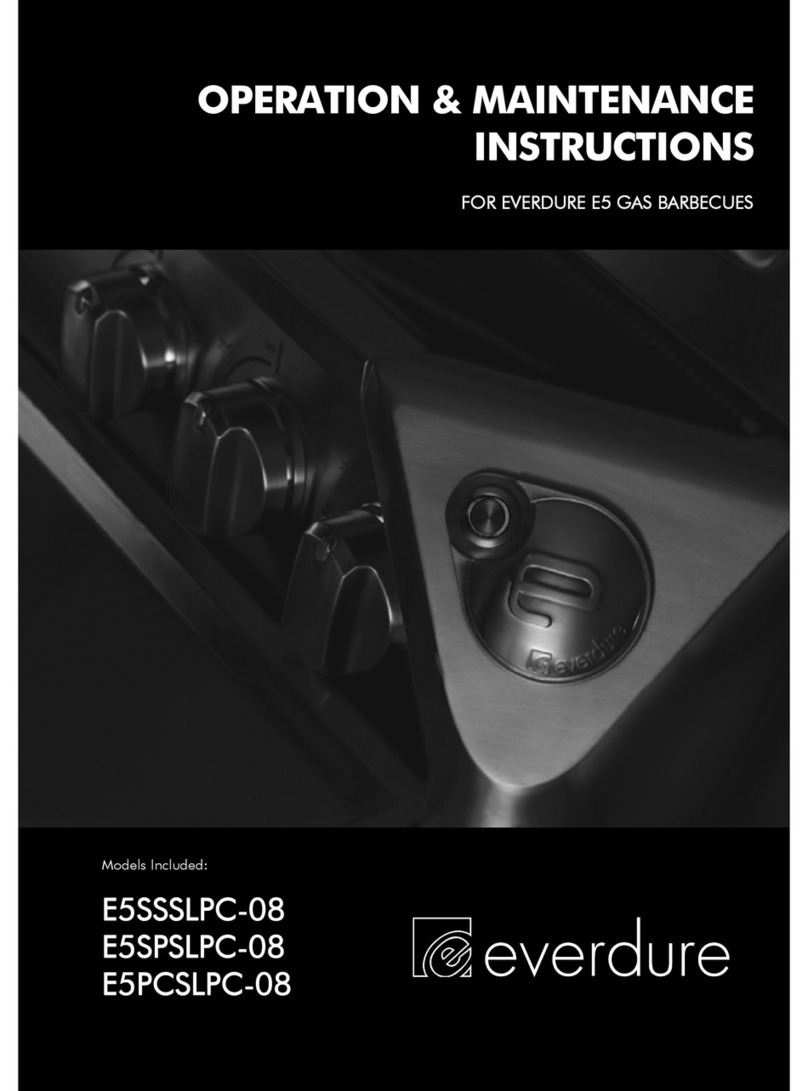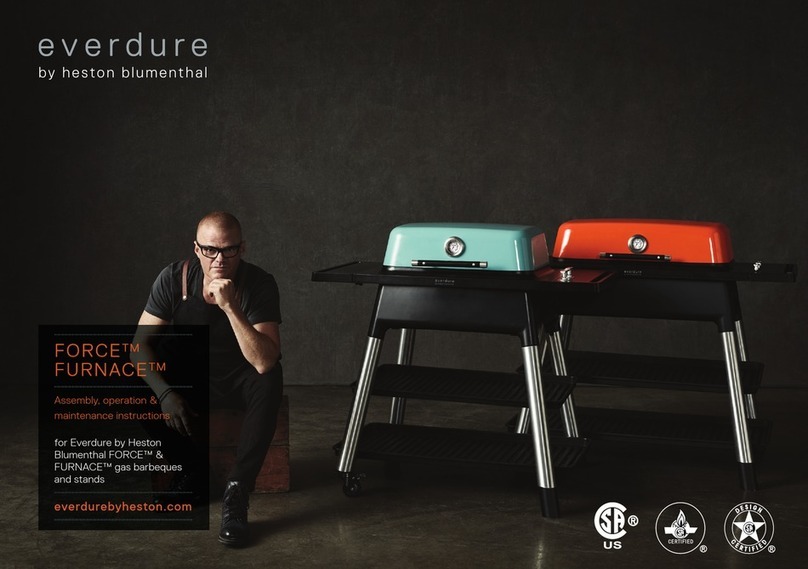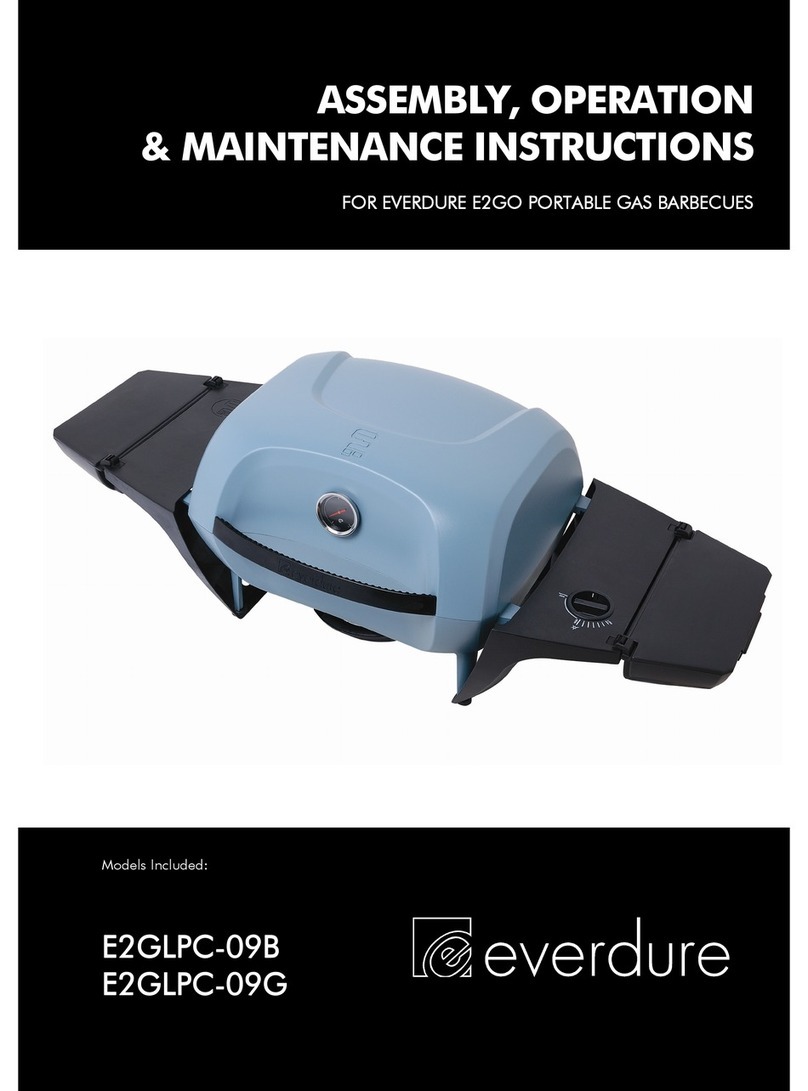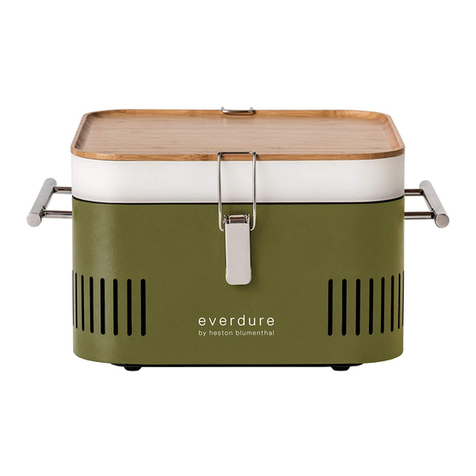
Assembly, Operation & Maintenence Instructions
Page 3
Important Safety Instructions
Important
Read the assembly instruction section and safety precautions of this booklet carefully before
removing the contents of this carton. If you are unsure about anything regarding your barbecue,
please contact Everdure before operating the appliance.
1. This barbecue is for OUTDOOR USE ONLY. This appliance must NOT be used indoors. Follow the built-in
dimensions for the correct clearances.
2. Unsupervised children or pets should not be near a barbecue while cooking or during warm up or cool down.
Ensure children or pets are kept a safe distance well away from the barbecue whilst it is in use. Ensure that
young children do not play with the appliance.
3. Particular care must be taken when removing the fat tray. Hot fats can cause serious injury.
4. Turn all gas valves o including cylinder after use. Do not allow build up of unburned gas.
5. Do not use this appliance for any purpose other than what it is intended for.
6. People with ammable clothing such as nylon etc. should keep well away from the barbecue when it is
operating.
7. Never leave burners on high for more than 10 minutes unless actually cooking.
8. Always check for leaks when a gas cylinder is replaced or reconnected.
9. In case of fat re turn gas supply o. Fat drip trays should be cleaned and checked before using the barbecue.
Regular cleaning should reduce the build up of fat and food residues which is combustible and can result in
a fat re. Fat res can be prevented with diligence in cleaning your fat tray. Damage as a result of fat re is
not covered by your warranty and voids it. Do not use sand, fat absorbents or kitty litter in the fat tray, line the
fat tray with aluminium foil for easy cleaning.
10. For your safety and enjoyment, read all operating instructions before lighting.
11. Ensure that the product has adequate clearance from combustible materials. The appliance is designed so
that heat will not aect the trolley. All combustible materials must be kept more than 250mm from the sides
of the barbecue and more than 1500mm above the cooking surface of the barbecue.
12. If the burner makes a hissing sound when lit, it may be burning inside. Turn the burner o, allow to cool and
try ignition again. Keep your barbecue protected against strong wind – if this cannot be avoided, always check
that the burners remain alight if operating the barbecue in windy conditions.
13. This appliance is not intended for use by young children or inrm persons.
14. Do not carry out any servicing on the gas manifold of the barbecue yourself – this must only be done by
authorised technicians.
15. We recommend that you regularly maintain your barbecue and keep it in good condition. This can be
achieved by following the cleaning and maintenance suggestions in this booklet.
16. Do not use or store this appliance in areas of high salt content (a marine environment) or an area with caustic
fumes or liquids (such as a domestic pool), as these chemicals can cause the appliance materials to deteriorate
(and void the warranty). Regular cleaning and covering with an Everdure barbecue cover can help can help to
reduce this.
17. This appliance is not suitable for mounting in a movable vehicle (boat, trailer etc). The appliance should be on
a solid surface (ground, concrete etc.) when in use.
DO NOT operate this appliance before reading the instruction booklet
DO NOT place articles on or against this appliance
DO NOT store chemicals or ammable materials or spray aerosols near this appliance
DO NOT operate this appliance indoors
DO NOT enclose this appliance
